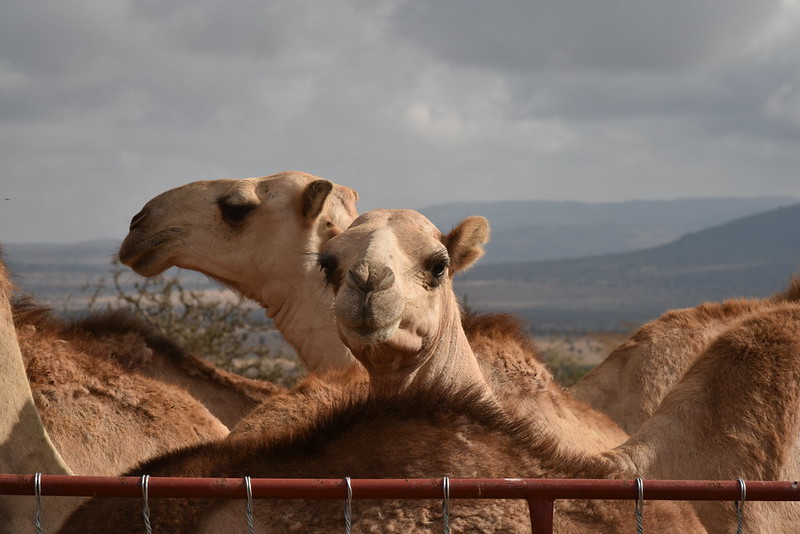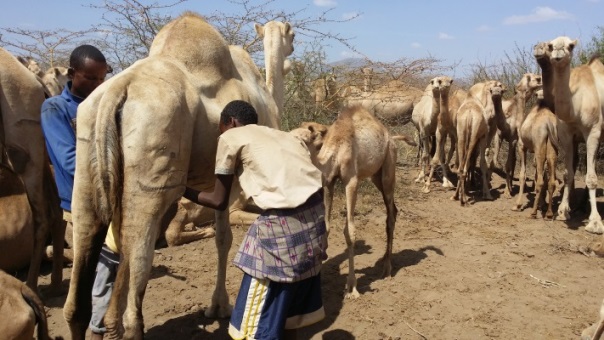Bernard Faye is an expert in camel farming. He previously worked as a scientific project manager in the animal production sector at the International Cooperation Centre for Agronomic Research in Development (CIRAD-France). Additionally, he has served as an international camel expert for FAO in several countries, such as Saudi Arabia, Morocco, Mauritania, Chad, and Kazakhstan.
How have camelids traditionally played a vital role in African communities, and what specific functions do they serve within these societies, especially in regions facing environmental and economic challenges?
Camel is a multipurpose animal used traditionally to carry goods and humans, to produce milk, meat, leather, and wool fibre, and to contribute to desertification combat (feeding behaviour, dissemination of desert seeds, soft feet pressure, wide interval between watering…). Camel also plays an important role in the nomad culture, contributing to the events of life such as festival and to sports like race in the Middle East or the camel polo in Mongolia. In traditional communities, camels are not “specialized”, meaning not devoted to one specific role. For instance, a dairy camel can be used for racing, while a male can be used for carrying goods or persons.
What key challenges do you see in the sustainable management of camelids, and what solutions or strategies have you been involved in to address these challenges?
In Africa, camels faced their geographical expansion in less arid places with higher risks of diseases. In many countries, camels face intensification of production because production is becoming more specialized, with less mobility, higher protein, and energy concentration in feeds. These changes require a thorough understanding of the impact on camel metabolism and physiology, the selection of more adapted camels to such new status, and investigating possible innovations in camel management to address this new context. My work aimed to contribute to this approach. For example, in intensive farm, monotonous feed is generally distributed twice a day, and the camel spends a few hours eating while in pasture, they spend at least eight hours looking for a wide variety of plants. So, in zero-grazing a system, allowing the camel to take more time to eat is important by using system allowing step-by-step feed distribution.
As an expert in the field, how do you foresee the impact of climate change on camelids and what measures can be taken to mitigate these effects?
I wrote a paper on this aspect, and I mentioned that the main impact of climate change was the geographical expansion of camel farming, especially in Africa, but also in Western countries, with the consequences given above. This geographical expansion is not linked to the expansion of traditional camel herders but to the adoption of camels by traditional exclusively cattle breeders in complement to their cattle herd and by farmers to secure their farming system in the face of the drought. It is also linked to the economic interest of camelid products such as milk, meat, and wool. Contrary to popular belief, the camel is a beneficiary rather than a victim of climatic changes. However, it may be affected by changes in disease patterns with the emergence of multifactorial and metabolic diseases rather than classical diseases like mange or trypanosomosis.
How do you think advancements in technology and research can improve the health and productivity of camelids in various parts of the world?
Camelology, the study of camels, is gaining important attention worldwide in three ways: Firstly, camels are used as biological models, for example, with camel immunoglobin also known as “nanoantibodies”, being of particular medical interest. Secondly, camels are being recognised as producing animals in harsh conditions, and, finally, camels are being considered as an element in arid ecosystems. In response, some camel research institutes and organizations were established, proposing innovative technologies for improving camel productivity, such as milk processing, genetic investigations, assisted reproduction, and feeding. Other researchers focus on camel health, notably on pharmacokinetics to better adapt medicine to camel physiology. However, there is a gap in the quality of research between countries with high scientific potential (such as those in the Middle East and North Africa) and the poorest countries (like the Sahelian countries). While, in the latter, their needs are more urgent due to the importance of their camel population and the role of camels for pastoralists in providing a source of income and securing their production system in the face of climatic changes, they have lower scientific potential. This is particularly significant given the recurrent droughts in the region.
What initiatives or projects have you been involved in that focus on sustainable practices in camelid management, and what were the outcomes of these efforts?
I was involved in many projects with different partners as a “key person”, but in the recent past, the most critical projects were 2 European projects (PROCAMED on the promotion of technical innovations in the camel sector around the Mediterranean, and CAMELMILK on the development of camel milk sector in Mediterranean Basin) and with FAO in different countries: in Saudi Arabia (improvement of camel milk production and processing), in Mauritania (development of biotechnology of reproduction, camel milk processing, typology of farming systems), in Oman (economic analysis of the camel milk sector, training the woman association for processing camel milk, improvement of camel hygiene), in Chad (analysis of the camel milk value chain around N’Djamena). I also contributed to a project in Kazakhstan with the University to assess the conditions for getting organic camel milk. I participated in many training sessions for camel farmers on milk hygiene and processing in France, Spain, Algeria, Turkey, Oman, Chad, Mauritania, Morocco and Kazakhstan. It’s difficult to summarise the outcomes, but I can say that there has been an improvement in camel milk hygiene from production to processing, establishment of the biological and pathological values of blood biochemistry, and a better understanding of the camel welfare, and lastly, an investigation of camel biodiversity.


